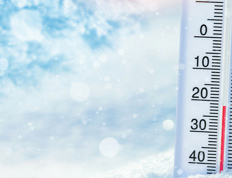Remember to install moisture, snow and ice waterproofing membrane that will prevent heat loss and the formation of ice barriers.
Ice storm and freezing rain


Ice storm and freezing rain are feared weather phenomenon due to the weight of ice that can do a lot of damage to buildings and outdoor structures. They can also be the cause of power outages and occur without warning from November to April at temperatures close to 0°C.
Tips to reduce risk of damage
- Examine the surroundings of the roof to see if ice barriers and ice cubes have formed. Flatter slopes are more exposed to ice formation, but any structure can be vulnerable.
- Clear the roof of snow before successive layers of ice and snow accumulate too much. The weight and tension of ice and snow are the main causes of roof collapse.
When redoing your roof
- In the attic, check if openings could cause heat loss.
- Make sure that the fibre glass insulations are tightly packed and adding a layer of it increases sealing and prevents heat from escaping in the attic and forming ice around the roof.
- Check that there are no tree branches that could sag on the roof and electrical wires and near the windows.
- Make sure gutters and downspouts are not obstructed to facilitate the flow of water.
- Apply de-icing on exterior passages (entrance to the house, stairs, sidewalks, etc.) to prevent falls and injuries.
- In the event of a power outage, have a 72-hour emergency kit on hand, and if possible, an auxiliary heater such as a generator.
The 1998 ice storm
The ice storm that hit Quebec in January 1998 cost more than $2.5 billion in insured damages. For five days, the region bounded by the cities of Saint-Hyacinthe, Farnham and Saint-Jean-sur-Richelieu (the famous " black triangle "), received more than 100 mm of freezing rain.
For more tips, visit the Institute for catastrophic loss prevention website.

Other topics that may interest you:
home insurance
tips
extreme weather events



















